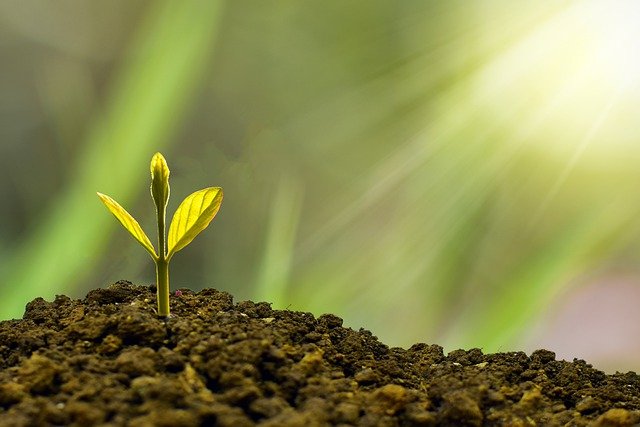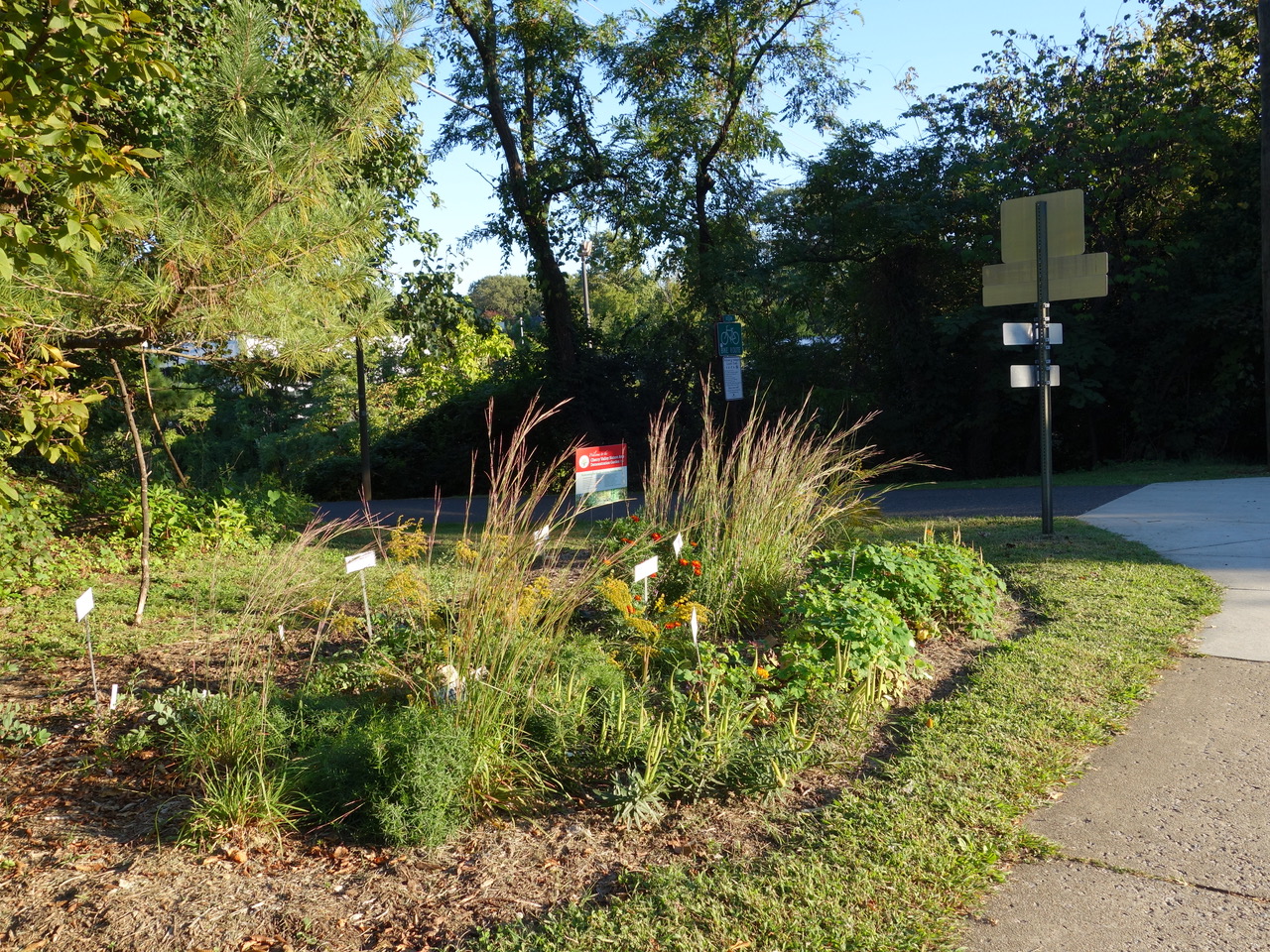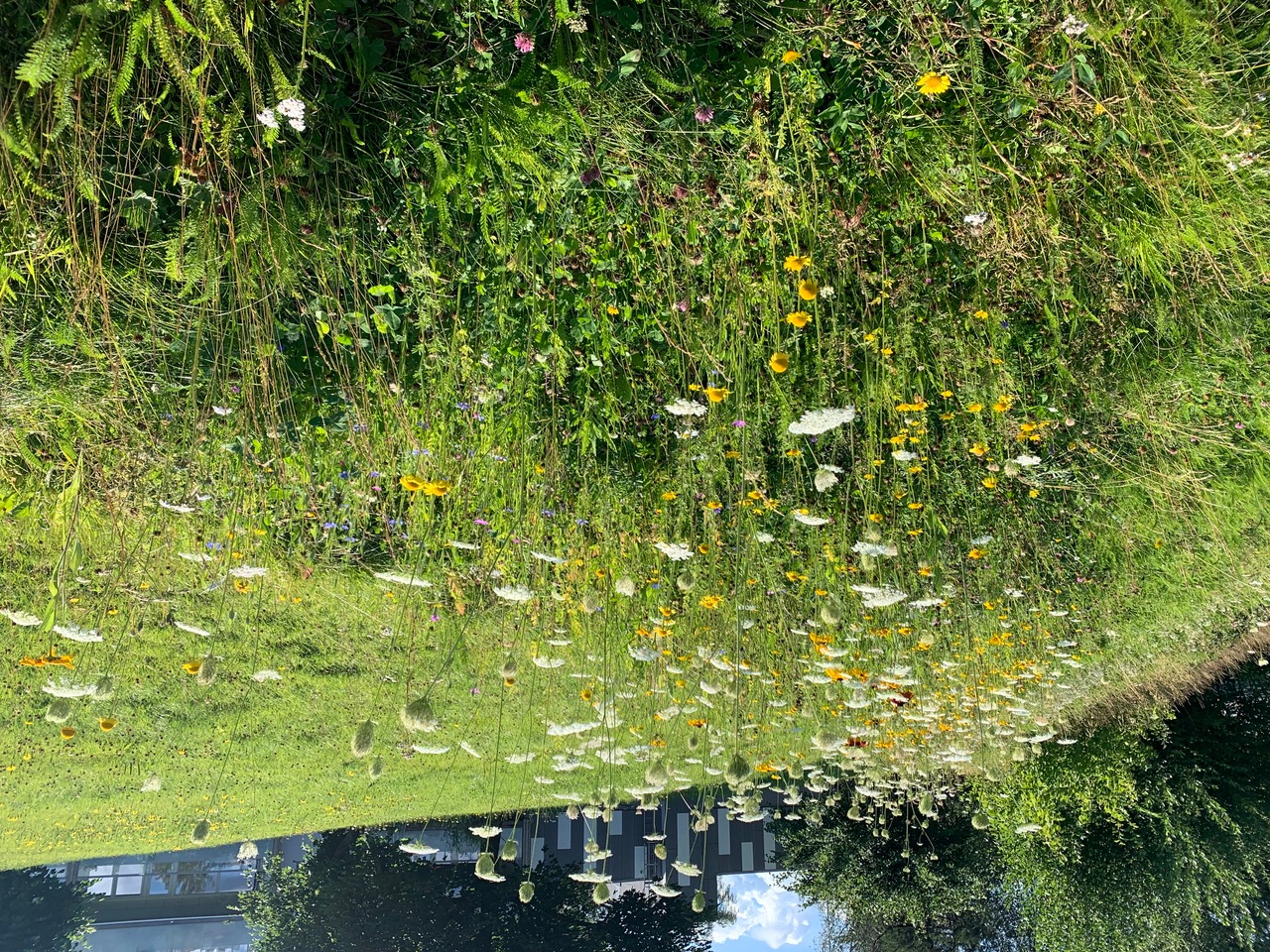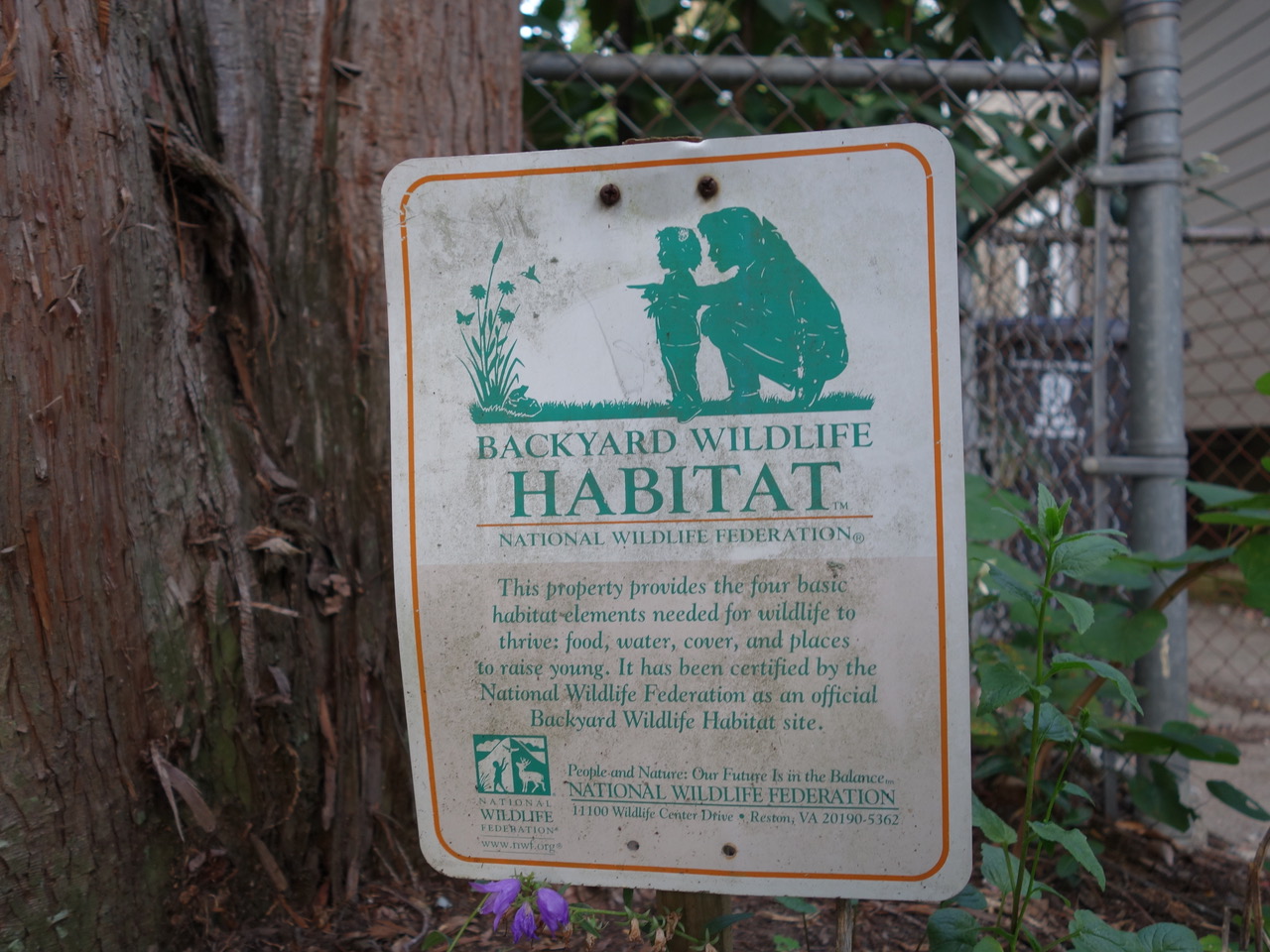by Rena Levin, AWC Oslo
In the northern hemisphere, the sun is shining warmer and brighter every day. It might be 7 °C/45 °F outside, but here in Oslo,  I join in the time-honored Norwegian tradition of sitting outside by a sun/drenched wall to soak in the precious rays. The vernal equinox marked the start of spring. It was also Nowruz, the Persian New Year, which is celebrated with foods that symbolize the season and its promise of renewal. In the weeks that follow, Easter and May Day also fete new life.
I join in the time-honored Norwegian tradition of sitting outside by a sun/drenched wall to soak in the precious rays. The vernal equinox marked the start of spring. It was also Nowruz, the Persian New Year, which is celebrated with foods that symbolize the season and its promise of renewal. In the weeks that follow, Easter and May Day also fete new life.
Spring beckons those of us with itchy and aspirational green thumbs to go out and dig in the dirt. We are eager to get started, inspired by visions of coloful flowers, tasty homegrown produce and scents of fresh herbs. These thoughts make us happy. Whether gardeners or not, plants make us humans happy. Numerous studies have found that plants, including potted ones inside, have positive effects on mental and emotional health.
Plant for the space you have (or want to use)
An often underappreciated benefit of growing things is how doing so can contribute to the health of local ecosystems. Whether living in the countryside or downtown in a major metropolis, each of us is part of an ecosystem. The National Geographic Society defines an ecosystem as, “...a geographic area where plants, animals, and other organisms, as well as weather and landscape, work together to form a bubble of life.” Ecosystems vary in size and connect with other ecosystems.
One can easily go down the fascinating rabbit hole of ecosystem info, but the point here is that even if your surroundings feel far removed from nature, your home is in an ecosystem that is in turn part of something bigger. This means that whether your plants will grow in a window box, pots on your balcony or in your yard, what you grow can benefit the web of life where you live.
This is perhaps most evident when it comes to pollinators. They get a lot of attention with good reason. Though small in size, pollinators are keystone species vital for the propagation of plants, some of which have evolved in sync with specific pollinators. Planting for pollinators means growing things that will nourish your local populations, both domesticated and wild. And every little bit really does help. As part of the All-Ireland Pollinator Plan, Galway started a “Pots for Pollinators” initiative to promote planting in small spaces.
Pollinators need a variety of plants in order to find food throughout their foraging season. While variety is a feature of urban areas, the more pollinator-friendly plants there are, the larger the population that can be supported. (It is important to note that many decorative plants have been bred to be aesthetically pleasing and don’t produce food for pollinators.) In suburban and rural areas, pollinator-friendly plants can counteract food-dessert type surroundings dominated by grass and/or monocrops.
In a ddition to feeding pollinators, the plants you grow can help them travel. Yes, really – and that’s important, also in a local context. Habitat fragmentation is a problem for all sorts of wildlife. Honeybees can fly far, but other pollinators have much shorter ranges. The right plants grown within a certain distance of each other can help pollinators get from one feeding area to another (and possibly meet a mate) by providing nourishment and safe rest stops en route.
ddition to feeding pollinators, the plants you grow can help them travel. Yes, really – and that’s important, also in a local context. Habitat fragmentation is a problem for all sorts of wildlife. Honeybees can fly far, but other pollinators have much shorter ranges. The right plants grown within a certain distance of each other can help pollinators get from one feeding area to another (and possibly meet a mate) by providing nourishment and safe rest stops en route.
In 2007, designer Sarah Bergmann started work on her first “Pollinator Pathway Project” to create a linear habitat for local native pollinators connecting the University of Seattle’s pesticide-free campus to a small wooded area a mile away. With the help of landscape architects, entomologists, the city government, and homeowners along the route who volunteered use of their parking strips, Bergmann coordinated the planting of primarily native species that pollinators like and are easy to maintain. The idea caught on, and it has inspired similar efforts around the world. Oslo launched its longer and more dispersed bee highway in 2015.
If you have the space, trees and shrubs can also be important. According to side notes in this interesting culture piece about hedges in the UK, the bushes British people use to mark property lines provide habitat for various critters, including dozens of species of nesting birds.
Plant in accordance with your geographic location
While it can be nice to have plants in your home that are dependent on specialized care to survive, when growing things outside, think local and act local.
This means growing plants that are adapted to the climate where you live. They will require less work to thrive, are more likely to tolerate weather extremes, and won’t deplete precious natural resources the way other plants do. Case in point is turf-grass lawns. They have been an ideal in the US for years, but they detract from biodiversity and especially in arid western parts of the country, they tax already strained aquifers.
This also means planting native as much as possible. Compared with other plants, species that evolved in your area will do even better at providing the benefits listed above. From promoting microbe diversity for healthier soil and deeper roots that conserve it, to feeding and sheltering insects and wildlife, they are also better suited to support your local ecosystem. When you grow native plants, you help restore lost habitat and preserve biodiversity. If you want to take things a step further, you can augment these benefits by participating in or organizing seed sharing for native plants in your area.
Sometimes the best thing is not doing something
We all know to be wary of pesticides, but the message bears repeating. Pesticides and synthetic fertilizers should not be part of your gardening and/or yard-keeping. These may produce the results you want for your plants in the short term, but through things like runoff and ingestion, they cascade through the ecosystem causing all sorts of harm.
What else? A recurring tip on my social media feed in the fall is to not rake leaves. In the spring we’re encouraged not to  remove yard waste or mow too early. We are also reminded that dandelions and other “weeds” feed bees. Since it was first promoted by the UK organization Plantlife in 2019, “No Mow May” is really taking off. Less frequent mowing and remeadowing are additional related trends.
remove yard waste or mow too early. We are also reminded that dandelions and other “weeds” feed bees. Since it was first promoted by the UK organization Plantlife in 2019, “No Mow May” is really taking off. Less frequent mowing and remeadowing are additional related trends.
Here’s another tip that I haven’t seen much: turn off outdoor lights whenever you can and close your curtains or blinds when the sun goes down. Artificial light harms insects, wildlife and plants. Moths and other insects are indeed drawn to flames, and this is to their detriment. In 2020, the UN Environment Program published a story about light pollution’s negative effects on ecosystems which noted the overlooked role artificial lighting plays in insect declines. It does so by interfering with their development, feeding, reproduction and movement.
Similarly, artificial light can harm wildlife in a variety of ways. One way is by disorienting them. Examples include causing trouble for sea turtles during nesting season and migratory bird death from crashing into buildings. Another is by interfering with nocturnal hunting and foraging. In some cases this means predators feasting better than they otherwise would (or should). In others it means less food for foragers who reduce their activity for fear of being eaten.
Plants are harmed, too. Artificial light disrupts daily cycles of basic biological activities. Many of us humans know this well because of sleep problems. Standard advice for better sleep hygeine is to turn off screens and dim the lights. If plants could talk, they would ask us to do the same for them. Light pollution has been shown to interfere with their natural cycles of photosynthesis. Studies have also found that it can delay leaf loss in the fall and cause trees to bud too early in the spring.
In short, tempting as landscape lighting may be, don’t illuminate the out-of-doors more than necessary.
Plants as inspiration
 An inescapable challenge when writing a piece about gardening is the disconnect between FAWCO members living all around the world and the fact that what planting for the planet means in practice depends on where you live.
An inescapable challenge when writing a piece about gardening is the disconnect between FAWCO members living all around the world and the fact that what planting for the planet means in practice depends on where you live.
I hope the general tips provided here will be your starting point. Go online and search for information about plants and nature in your area. You are bound to find an abundance of resources, from information and organizations to classes and opportunities to engage in citizen science. Plant that seed of interest in altruistic gardening, tend it well, and see what it produces. I’m sure the results will be beautiful.
Learn More:
Interview with Sarah Bergmann about the Pollinator Pathway in Seattle
Take a deeper dive into the world of seeds by reading this article by Sheila Doucet
International Dark-Sky Association
2021 Scientific book chapter: Artificial Light at Night: A Global Threat to Plant Biological Rythyms and Eco-Physiologcal Processes
Photos:
- Plant with sun rays: Pixabay
- Remaining photos: courtesy of Rena Levin

